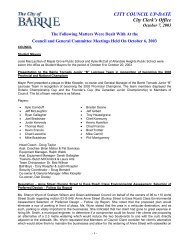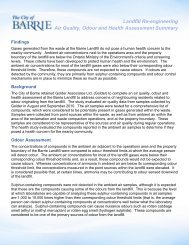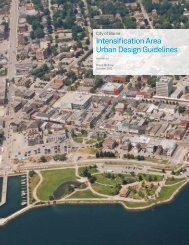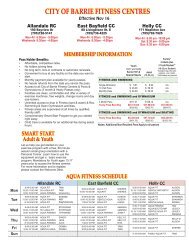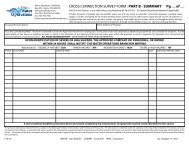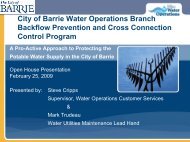APPENDIX C DETAILED SOIL CLASSIFICATION DESCRIPTIONS
APPENDIX C DETAILED SOIL CLASSIFICATION DESCRIPTIONS
APPENDIX C DETAILED SOIL CLASSIFICATION DESCRIPTIONS
You also want an ePaper? Increase the reach of your titles
YUMPU automatically turns print PDFs into web optimized ePapers that Google loves.
The limitations in Class 6 include the adverse effects of one or more of the following: very severe climate;<br />
very low water-holding capacity; very steep slopes; very severely eroded land with gullies too numerous<br />
and too deep for working with machinery; severely saline land producing only edible, salt-tolerant, native<br />
plants; very frequent overflow allowing less than 10 weeks effective grazing; water on the surface of the<br />
soil for most of the year; stoniness-or shallowness to bedrock that makes any cultivation impractical.<br />
Class 7-Soils in this class have no capability for arable culture or permanent<br />
pasture.<br />
The soils or lands in Class 7 have limitations so severe that they are not capable of use for arable culture<br />
or permanent pasture. All classified areas (except organic soils) not included in Classes I to 6 shall be<br />
placed in this class. Bodies of water too small to delineate on the map are included in this class.<br />
Class 7 soils may or may not have a high capability for trees, native fruits, wildlife and recreation. Hence<br />
no inferences can be made as to the capability of the soils and land types in this class beyond the scope<br />
of their capability for agriculture.<br />
Capability Subclasses<br />
Subclasses are divisions within classes that have the same kind of limitations for agricultural use.<br />
Thirteen different kinds of limitations are recognized at the subclass level. A brief discussion of these<br />
subclasses and their designation on maps follows:<br />
Adverse climate (C): This subclass denotes a significant adverse climate for crop production as<br />
compared to the "median" climate which is defined as one with sufficiently high growing-season<br />
temperatures to bring field crops to maturity, and with sufficient precipitation to permit crops to be grown<br />
each year on the same land without a serious risk of partial or total crop failures.<br />
Undesirable soil structure and/or low permeability (D): This subclass is used for soils<br />
difficult to till, or which absorb water very slowly or in which the depth of rooting zone is restricted by<br />
conditions other than a high water table or consolidated bedrock.<br />
Erosion (E): Subclass E includes soils where damage from erosion is a limitation to agricultural use.<br />
Damage is assessed on the loss of productivity and on the difficulties in farming land with gullies.<br />
Low fertility (F): This subclass is made up of soils having low fertility that either is correctable with<br />
careful management in the use of fertilizers and soil amendments or is difficult to correct in a feasible<br />
way. The limitation may be due to lack of available plant nutrients, high acidity or alkalinity, low exchange<br />
capacity, high levels of carbonates or presence of toxic compounds.<br />
Inundation by streams or lakes (I): This subclass includes soils subjected to inundation causing<br />
crop damage or restricting agricultural use.<br />
Moisture limitation (M): This subclass consists of soils where crops are adversely affected by<br />
drouthiness owing to inherent soil characteristics. They are usually soils with low water-holding capacity.<br />
Salinity (N): This subclass includes soils with enough soluble salts to adversely affect crop growth or<br />
restrict the range of crops that may be grown. Such soils are not placed higher than Class 3.<br />
http://www.irda.qc.ca/Site_anglais/sols_a/arda_a.htm



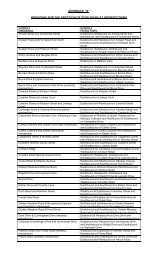


![Water Specification [DOC] - City of Barrie](https://img.yumpu.com/11698186/1/190x245/water-specification-doc-city-of-barrie.jpg?quality=85)

